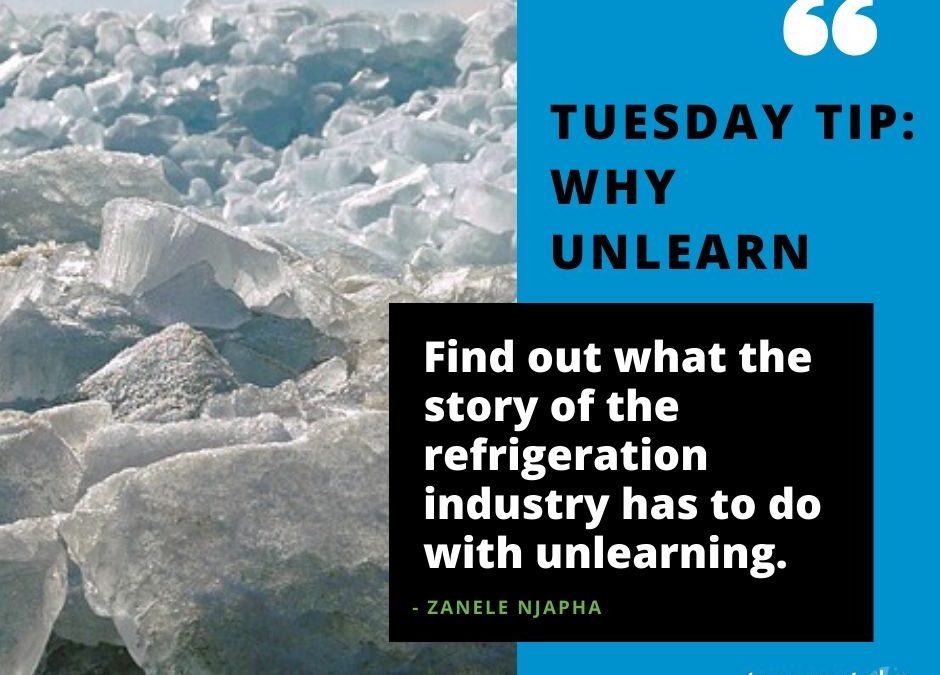The buzz-term of the ‘Fourth Industrial Revolution’ has left many organizations in a state of ongoing panic and in a race to find the solution to building resilient, learning-based organizations that don’t fall into the trap of becoming the Kodaks of the future.
Many organizations have fortunately discovered the value of learning as a necessary skill and tool when it comes to welcoming and collaborating with disruptive trends. This is partly thanks to pioneers such as Peter Senge, author of The Fifth Discipline – raising the idea that learning organizations were critical for resilience, adaptability and relevance.
With the intention of becoming learning organizations, we drill our HR business partner, strategic planning teams and put in place a set of handsome courses in the shape of MOOCs (Massive Open Online Courses), full day segmented trainings and weekends away at remote venues for intensive bootcamp-like team development engagements. But here’s the trouble with that – our biggest trouble with learning is actually unlearning.
To explain what I mean, let me tell you the story of the refrigeration and chilling industry, also known in some circles as the ice trade and its evolution. For the purposes of this article, I will break the industry’s development into 3 stages. Around the 1800s and early 1900s we began to identify the taking off of this industry, with the harvesting of ice becoming a revenue generating activity for some entrepreneurs in parts of the West. These ice harvesting businesses would harvest ice from frozen lakes and ponds in the North where the temperatures and season allowed. These blocks of ice would be cut, stored and then distributed for sale. Possible channels for innovation in this context would be stronger and larger horses, larger sleighs to stack the ice onto and possibly even larger and sharper tools such as saws.
Years later, the industry took on a new form and the world was introduced to ice factories such as the well-known Grimsby Ice Factory in Grimsby, England. This came with the use of refrigerator cars and the ever-so-helpful ‘ice man’. At its peak at the end of the 19th century, the ice industry in the United States had employed around 90 000 civilians and was worth millions.
From there on, although some stages of development occurred during the above two segments, the refrigerator was invented, and was developed from various models that continued to be improved. This development in the refrigeration or chilling industry meant that each and every household could now ‘harvest’ their own ice, irrespective of previously influential factors such as weather and geological placement.
The interesting point to note through all of this is that none of the entrepreneurs or companies from the first two stages of the evolution were a part of the refrigerator producing or supplying in the 1900s or today. The ice harvesters did not become the owners of ice factories and the ice factory owners did not capitalize on the invention of the refrigerator as a progression within their industry. They all struggled to do what innovation advisor, Guy Kawasaki, terms ‘jump onto the next curve’.
Jumping onto the next curve is about seeing yourself through the eyes of your client and then aligning with what that means under the disrupted conditions of your context. It’s all about unlearning whatever skills, models and even bites of information that are outdated and not only those that do not serve the organization’s progression, but also those that hinder the learning process.
Join us at our live webinar – 13 November
Hosted by Zanele Njapha and Graeme Codrington
“Organisations that do not unlearn will be a mere memory in the coming years. When your business models get disrupted, organisations must push back by unlearning, learning and relearning.”
In the webinar we’ll look at:
- Helping attendees understand the concept of unlearning
- We’ll show how unlearning is a critical part of building adaptable organizations and leadership
- We’ll provide past and current examples of teams/industries that did and did not leverage unlearning to innovate and stay resilient
- We’ll introduce 4 keys to building an unlearning culture within an organization.
SOURCES for article


